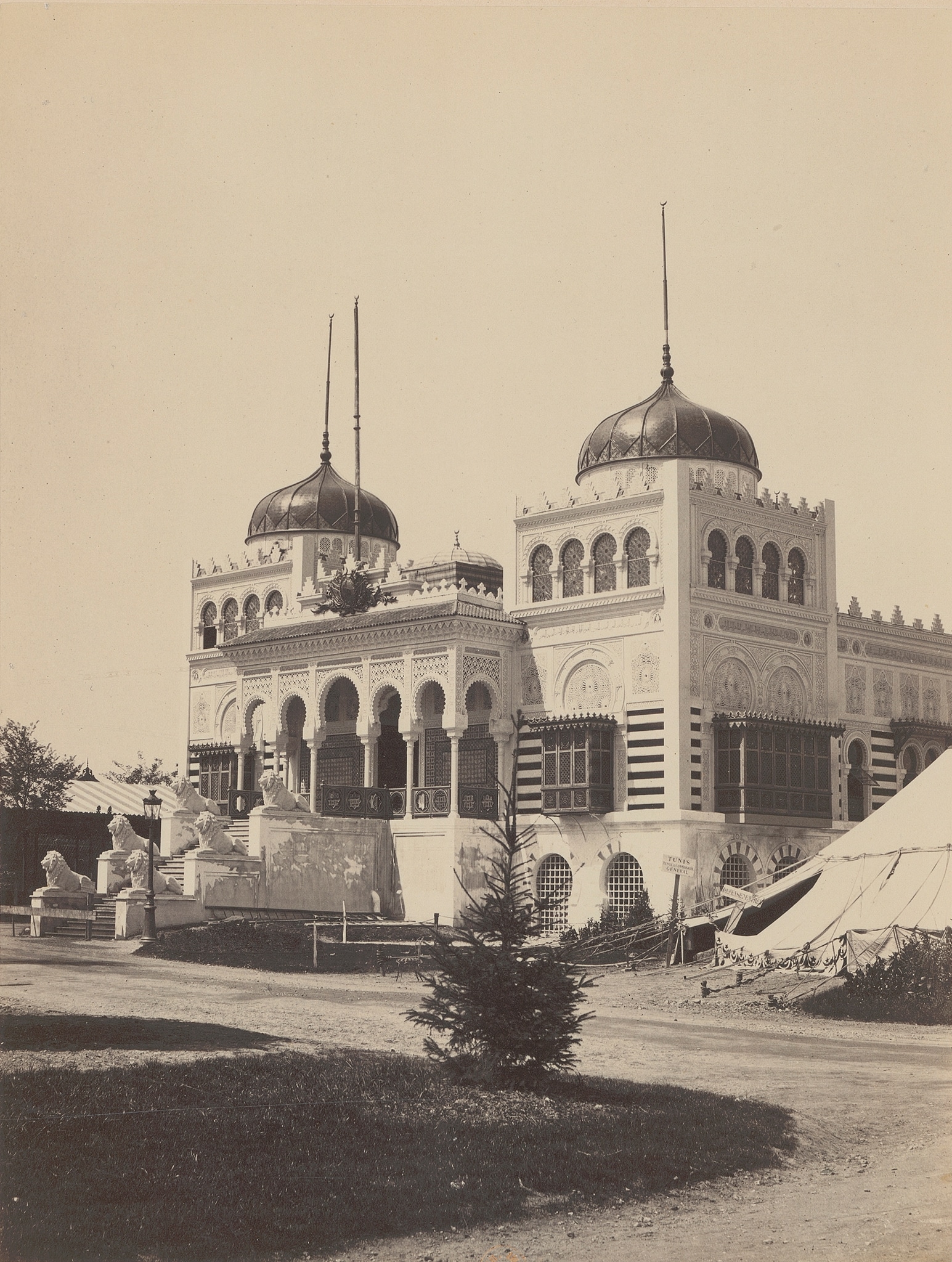This black and white photograph records the exterior of the so-called Palais du Bey, the Tunisian pavilion at the 1867 Exposition Universelle in Paris.
Perforated stucco lattices are a very prominent element of its architecture. They can be found on the main floor above the mashrabiyyāt (oriels) and above window openings that have horseshoe arches, as well as in the drums of the domes. The lattices take different shapes, from a lunette layout, to polylobed and round arches. Although the geometric patterns of the lattices come in different variations, all of them are based on star forms.
Two square structures rise above the right and left corners of the pavilion. Four horseshoe arched windows can be seen on each side of these structures. However, it appears that they are not filled with stucco lattices, but with stained glass in lead cames. The pattern, though, is similar to that of the stucco windows, as it is also based on star forms.
48A981 · ornement ~ motifs géométriques
48A9815 · ornement ~ formes étoilées
